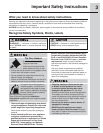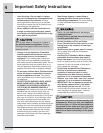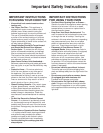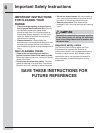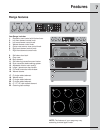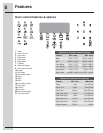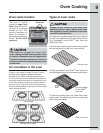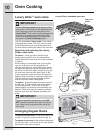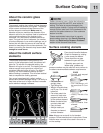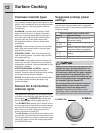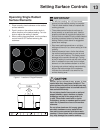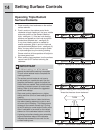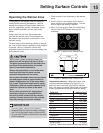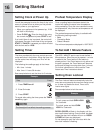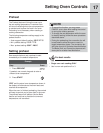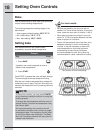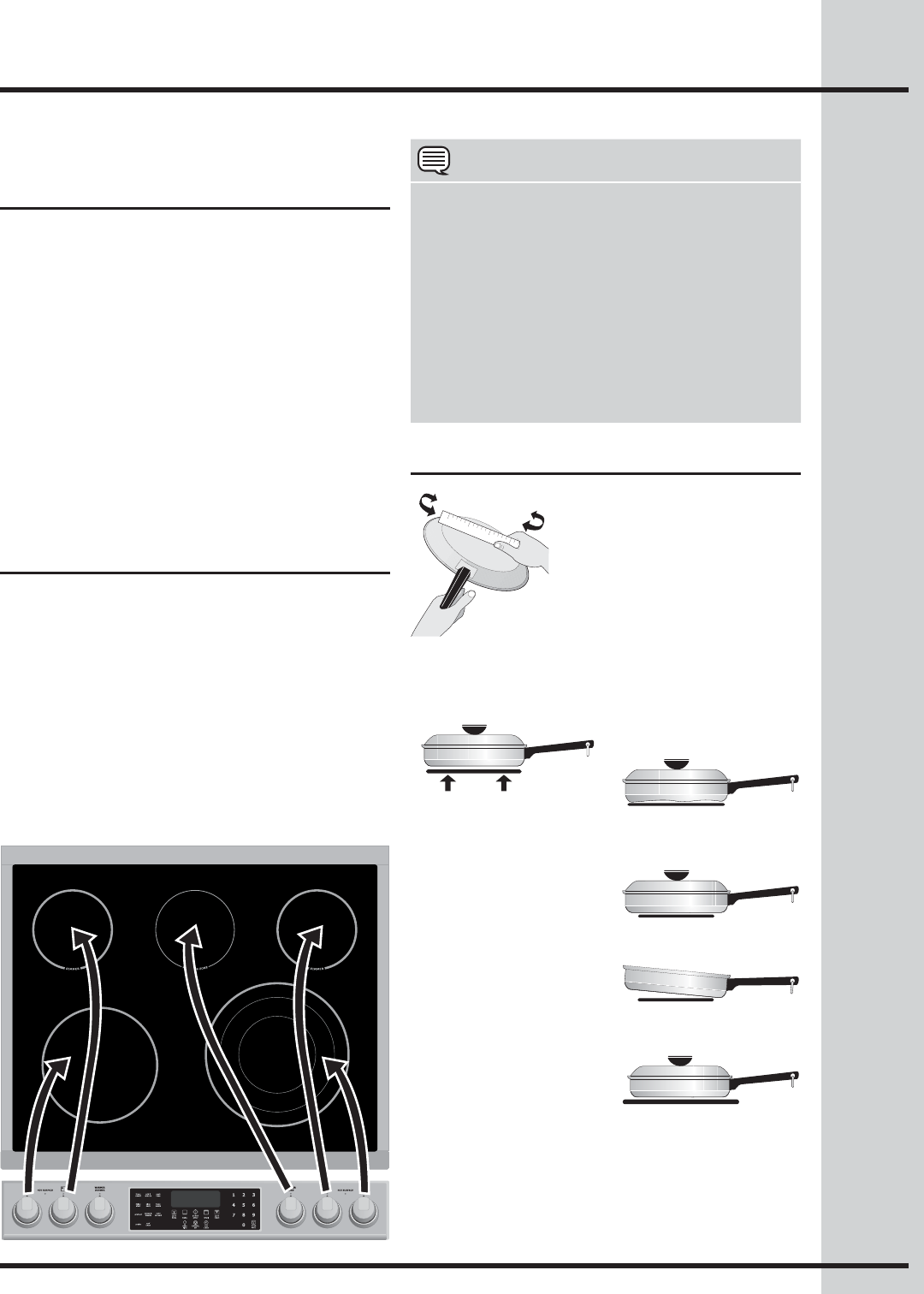
11
The ceramic cooktop has radiant surface elements
located below the surface of the glass. The design
of the ceramic cooktop outlines the area of the
surface element underneath. Make sure the
diameter of the pan matches the diameter of the
element outline on the cooktop. Heat is transferred
up through the surface of the cooktop to the
cookware. Only fl at-bottom cookware should be
used. The type and size of cookware, the number
of surface elements in use and the settings, are all
factors that will affect the amount of heat that will
spread to areas beyond the surface elements. The
areas surrounding the elements may become hot
enough to cause burns.
The element temperature rises gradually and
evenly. As the temperature rises, the element will
glow red. To maintain the selected setting, the
element will cycle on and off. The heating element
retains enough heat to provide a uniform and
consistent heat during the off cycle. For effi cient
cooking, turn off the element several minutes
before cooking is complete. This will allow residual
heat to complete the cooking process.
Your range is equipped with radiant surface
burners with different wattage ratings. The ability to
heat food quicker and in larger volumes increases
as the element wattage increases.
Surface Cooking
About the ceramic glass
cooktop
About the radiant surface
elements
NOTE
Radiant elements have a limiter that allows the
element to cycle ON and OFF, even at the HI
setting. This helps to prevent damage to the
ceramic glass cooktop. Cycling at the HI setting is
normal and can also occur if the cookware is too
small for the radiant element or if the cookware
bottom is not fl at.
Please read detailed instructions for ceramic
glass cooktop cleaning in the Care & Cleaning
section and Solutions to Common Problems
section of this Use and Care Guide.
Surface cooking utensils
Note: Always use a utensil for its intended
purpose. Follow manufacturer’s instructions. Some
utensils were not made to be used in the oven or
on the cooktop.
*GOOD
• Flat bottom and
straight sides.
• Tight fi tting lids.
• Weight of handle does
not tilt pan. Pan is well
balanced.
• Pan sizes match the
amount of food to be
prepared and the size
of the surface element.
• Made of material that
conducts heat well.
• Easy to clean.
• Always match pot
diameter to element
surface diameter.
POOR
• Curved and warped
pan bottoms.
• Pan overhangs unit
by more than 2.5 cm
(1”).
• Heavy handle tilts
pan.
• Pan is smaller than
element.
Pans should have fl at bottoms.
Check for fl atness by rotating
a ruler across the bottom.
There should be no gaps
between the pan and ruler.
* Specialty pans such as
lobster pots, griddles and
pressure cookers may be used but must conform to
the above recommended cookware requirements.



